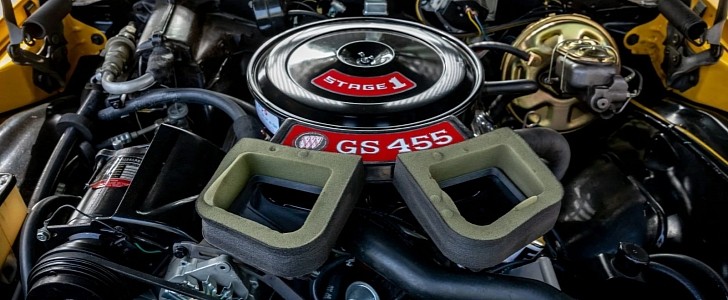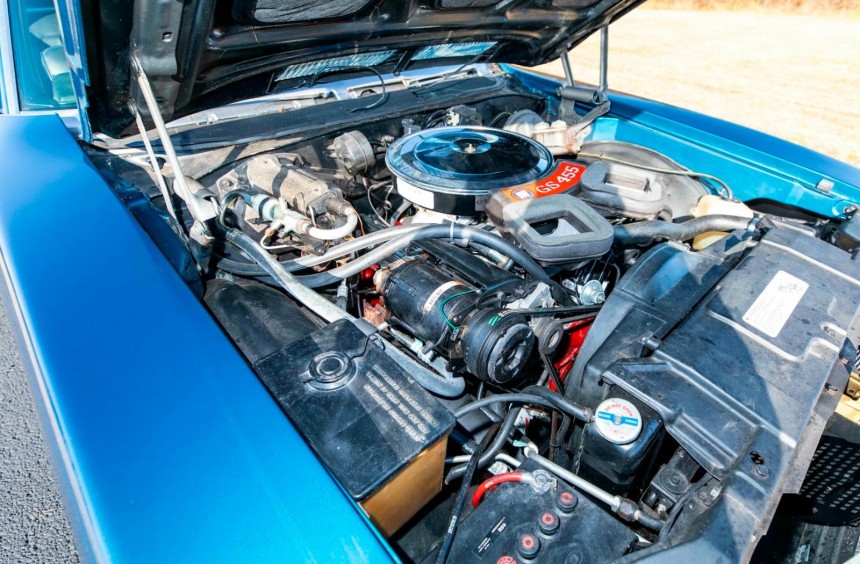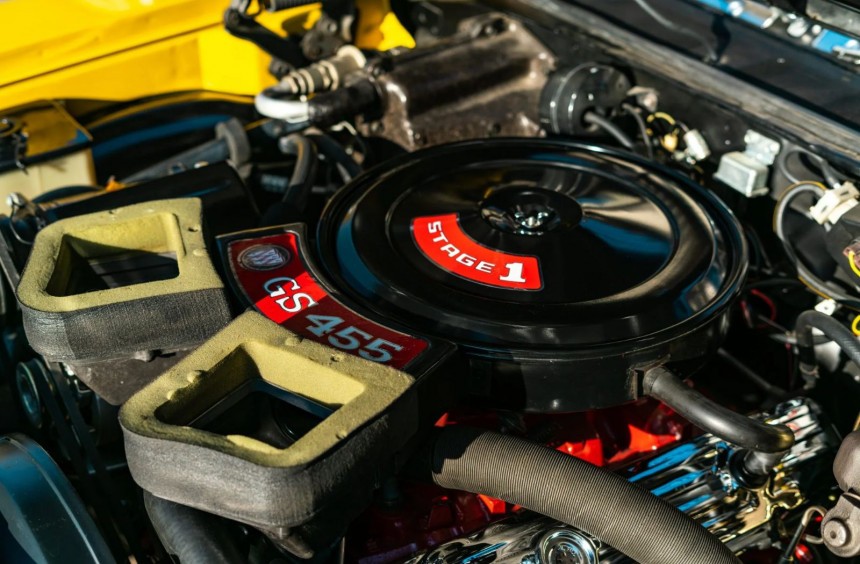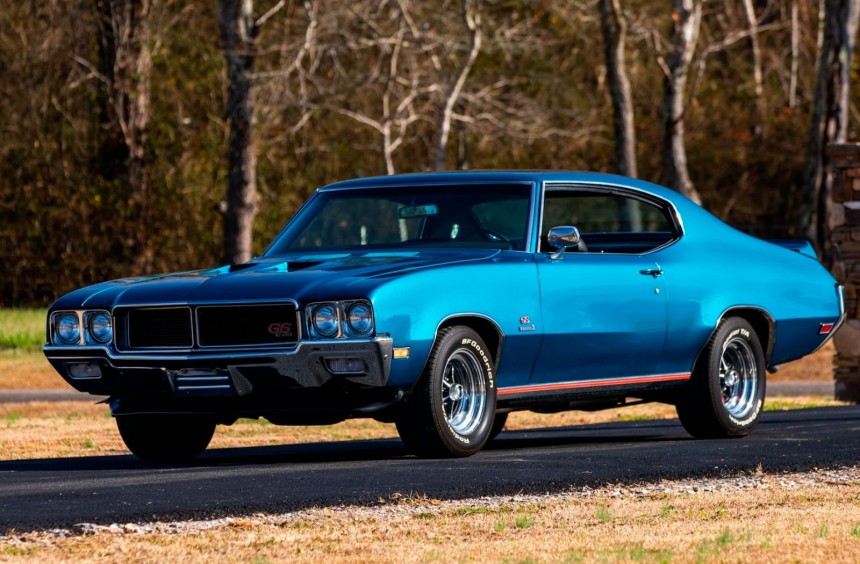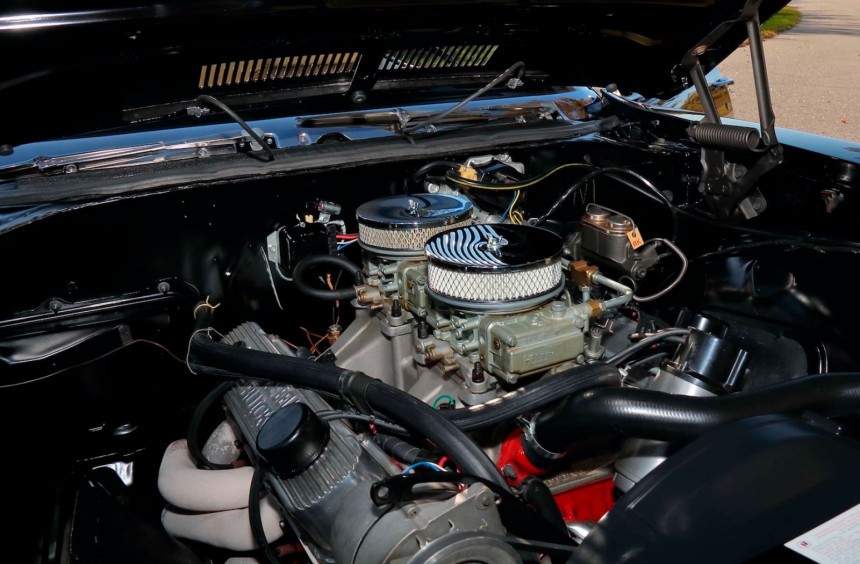With muscle cars slowly but surely transitioning to electric power, petrolheads love to reminisce about the glory days of massive V8s. However, many seem to forget the glorious 455-ci (7.5-liter) that was unleashed by Buick in 1970.
Unlike Pontiac and Oldsmobile which disappeared during the 2000s, General Motors’ Buick Motor Division (as it’s officially called) is still alive and well. But, with a lineup of painfully boring models – most tailored for the Chinese market where it currently thrives – the brand is a shadow of its former self.
The story was much different six decades ago when Buick was one of the manufacturers who were pushing the horsepower envelope and unleashing some of the most exciting cars ever built in the U.S.
During that era, high-powered muscle reigned supreme on American roads, and at the heart of these four-wheeled monsters were mighty V8 engines.
Available in a mind-boggling variety of setups, these eight-cylinder legends were becoming more and more powerful every year, with massive big blocks sitting at the top of the food chain.
These days, conversations about those iconic big blocks revolve around Chrysler’s 426 HEMI, Chevy’s LS6 454, or Ford’s 427 (mainly the Cammer), but Buick’s gargantuan 455 was, in many ways, just as impressive.
As surprising as it may seem today, back in the 1960s and 1970s, GM’s divisions enjoyed a high degree of freedom when it came to developing their own V8s.
Buick engineers began designing their own big block during the late 1960s, rolling it out on select models in 1967. At first, it was available in 400-ci (6.6-liter) and 430-ci (7.0-liter) versions but in 1970 its displacement was raised to a whopping 455 ci (7.5 liters).
Pontiac and Olds also offered a 455, yet apart from the displacement, these three titans had little in common in terms of architecture. Rather than borrowing their GM siblings’ recipes, Buick engineers headed by Denny Manner elected to only bore out the cylinders of its 430 from 4.1875 inches (106.36 mm) to 4.31 inches (109.47 mm). The Olds 455 was based on the smaller 425 but with a lengthened stroke, while Pontiac’s 455 was developed around a bored and stroked version of the division’s 428.
This method of increasing displacement made the Buick 455 one of the lightest big blocks around. With its thin-walled construction – one of the very first V8 engines to employ this advanced production technology- it weighed 150 lb (68 kg) less than a Chevrolet 454 in entry-level guise. Moreover, only altering the stroke made most of the components from the 400 and 430 (with the exceptions of pistons and some cylinder heads) compatible with the 455, which in turn lowered production and maintenance costs.
In terms of power, the regular-spec 455 was conservatively rated at 350 hp, yet the torque it could produce was unmatched. With 510 lb-ft (691 Nm) attainable as low as 2,800 rpm, it delivered more torque to the rear wheels than any other muscle car engine available in a mass-produced model.
But the good news for the 1970 model year didn’t end with the regular 455. With GM finally lifting its self-imposed 400-ci engine restriction for intermediate modes, Buick engineers were free to transform the performance-oriented, Grand Sport model and its striped, GSX brethren into veritable dragstrip warriors with the addition of the Stage 1 engine option.
Available for 455-powered cars, the option added larger valves, a higher compression ratio, and a more aggressive camshaft that increased output to 360 ponies. However, as was customary at the time, the output was deliberately underrated to keep insurance premiums at bay. In reality, the power potential of the Stage 1 455 was closer to the 400 hp mark.
There was also a very rare dealer-installed Stage 2 option conceived specifically for professional drag racing. The very few 455 engines that were equipped with this package received special heads that featured round exhaust ports, matching Kustom headers, high compression forged pistons, an Edelbrock aluminum intake, an even more aggressive cam, and a Holley 850-Cfm carb. In this configuration, the mighty 455 could easily surpass 500 hp.
As impressive as it was Buick 455 was too late to arrive at the American automotive industry’s big block party. By 1971, it was clear that the muscle car’s days of glory were coming to an end. With stricter emission regulations and a looming oil crisis, engineers were forced to restrict the potential of the big block. By 1972, it was rated at only 250 hp (in part due to the switch from net to gross horsepower) and four years later, it was discontinued altogether.
Although it was short-lived and didn’t equip the era’s most popular muscle cars, Buick’s 455 big block was one of the most impressive big block V8s ever built. In terms of torque, it was the most powerful engine mass-produced on American soil at the time of its release, and it continued to hold this title for the next 22 years until Dodge introduced the Viper.
In the video below by MuscleCarOfTheWeek, you can learn more about the 1970 Buick GSX, the most badass model that was equipped with the 455 Stage 1.
The story was much different six decades ago when Buick was one of the manufacturers who were pushing the horsepower envelope and unleashing some of the most exciting cars ever built in the U.S.
During that era, high-powered muscle reigned supreme on American roads, and at the heart of these four-wheeled monsters were mighty V8 engines.
Available in a mind-boggling variety of setups, these eight-cylinder legends were becoming more and more powerful every year, with massive big blocks sitting at the top of the food chain.
These days, conversations about those iconic big blocks revolve around Chrysler’s 426 HEMI, Chevy’s LS6 454, or Ford’s 427 (mainly the Cammer), but Buick’s gargantuan 455 was, in many ways, just as impressive.
Buick engineers began designing their own big block during the late 1960s, rolling it out on select models in 1967. At first, it was available in 400-ci (6.6-liter) and 430-ci (7.0-liter) versions but in 1970 its displacement was raised to a whopping 455 ci (7.5 liters).
Pontiac and Olds also offered a 455, yet apart from the displacement, these three titans had little in common in terms of architecture. Rather than borrowing their GM siblings’ recipes, Buick engineers headed by Denny Manner elected to only bore out the cylinders of its 430 from 4.1875 inches (106.36 mm) to 4.31 inches (109.47 mm). The Olds 455 was based on the smaller 425 but with a lengthened stroke, while Pontiac’s 455 was developed around a bored and stroked version of the division’s 428.
In terms of power, the regular-spec 455 was conservatively rated at 350 hp, yet the torque it could produce was unmatched. With 510 lb-ft (691 Nm) attainable as low as 2,800 rpm, it delivered more torque to the rear wheels than any other muscle car engine available in a mass-produced model.
But the good news for the 1970 model year didn’t end with the regular 455. With GM finally lifting its self-imposed 400-ci engine restriction for intermediate modes, Buick engineers were free to transform the performance-oriented, Grand Sport model and its striped, GSX brethren into veritable dragstrip warriors with the addition of the Stage 1 engine option.
There was also a very rare dealer-installed Stage 2 option conceived specifically for professional drag racing. The very few 455 engines that were equipped with this package received special heads that featured round exhaust ports, matching Kustom headers, high compression forged pistons, an Edelbrock aluminum intake, an even more aggressive cam, and a Holley 850-Cfm carb. In this configuration, the mighty 455 could easily surpass 500 hp.
Although it was short-lived and didn’t equip the era’s most popular muscle cars, Buick’s 455 big block was one of the most impressive big block V8s ever built. In terms of torque, it was the most powerful engine mass-produced on American soil at the time of its release, and it continued to hold this title for the next 22 years until Dodge introduced the Viper.
In the video below by MuscleCarOfTheWeek, you can learn more about the 1970 Buick GSX, the most badass model that was equipped with the 455 Stage 1.
